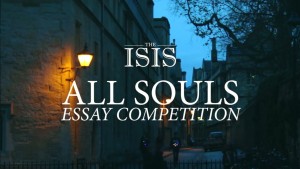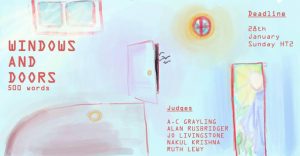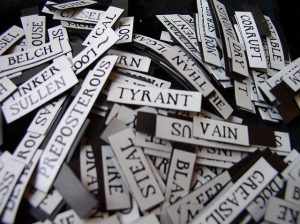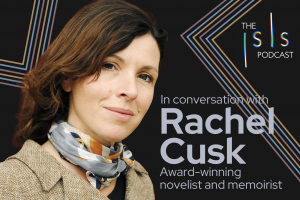
What We’re Into: Staff Picks
by The ISIS | October 21, 2015
I’m a big fan of Readux Books, a Berlin-based publisher which produces beautifully designed pocket-sized works of translated fiction, so I was pleased to find this essay by its founder in the LA Review of Books. It’s a clever meditation on the paradoxes of translation, which expresses its author’s views through a collage of quotations from other writers. Some of them, such as Susan Sontag, are predictable, others unknown, others, such as Sir Thomas Browne, author of Hydriotaphia, Urn Burial, or, a Discourse of the Sepulchral Urns lately found in Norfolk, come entirely out of left field, and trying to disentangle the tissue of quotations makes for an engaging little puzzle.- Thea Bradbury
You might have heard about Minnesota artist Allan Kingdom after his feature on Kanye’s single ‘All Day’ – it would be pretty hard not to after that iconic debut at the BRITs. Kingdom’s 2014 full-length ‘Future Memoirs’ definitely deserves your attention, but you might not have picked up on his frequent collaborator Spooky Black – another member of collective The Stand4rd. The low-fi, VHS-meets-internet-aesthetic video for Spooky’s‘Without You’ went viral last year and kicked off a massive wave of hype(rbole) for the young singer from the likes of Noisey. He’s managed to remain pretty low-key, however, refusing to self-promote, and his tracks have kept that feel of being written and recorded in a dimly-lit bedroom. The lyrics are sexy and sincere, his delivery moving theatrically between confident and hurt (“Don’t you know you’re so sexy the way you move your body up and down / I wanna tell you how beautiful you are but you’re nowhere to be found.”) The production is stripped back, but echoey enough to feel expansive and always backed up by a good beat. If you’re into RnB, or like me a total neophyte, check out his Soundcloud and latest release alongside Bobby Raps under the name Corbin, ‘Couch Potato’.-Fintan Calpin
This summer, I watched Yorgis Lanthimos’ ‘Dogtooth’ and ‘The Wolfpack’, in the space of a week. The former is fictional and the latter is a documentary, but each film revolves around the lives children, who develop fascinating esoteric lives as a result of being secluded from the world by their parents. The ‘children’ in ‘Dogtooth’ look like the must be in their early twenties, and spend their days secluded in their pastel-coloured suburban bungalow revising for tests set by their father by learning the definitions of words which are entirely different from their meanings in the outside world-‘motorway’ means ‘light wind’, for example. The father of ‘The Wolfpack’ also feeds his children fictions but these are imported, rather than homespun. Moselle’s film that centres on the lives of a brood who were prevented from leaving their Manhattan apartment, and as a result lived vicariously through an enormous film collection, memorising and acting out their favourites with home-made props (including, among other things, a remarkable cardboard batman outfit and multiple types of handguns). Both films reach their climax when one child decides to break free of the family home, and I found it uplifting that this was a much happier event ‘The Wolfpack’ than in the micro-dystopia of ‘Dogtooth’. –Thea Slotover
The long awaited third series of Twin Peaks has been pushed back to 2017, providing the perfect amount of time to catch up on 30 glorious episodes of surreal small-town gossip and supernatural threat. Twenty five years after its pilot episode was broadcast in 1990, the show retains the ability to shock, whether that is in the first brutal murder or the premonitory power of a piece of wood – see the Log Lady for more on this. Characterised by a heady combination of melodrama, disturbing dreams, damn fine cups of coffee and the repeated return to a shot of a swinging traffic light (I’m yet to figure out the significance), each episode exceeds the absurdity of the last. Don’t be tempted to skip the three minute opening credits: you will need the atmospheric score to loosen your clutches on credibility and accept Twin Peaks for all its moody mystery.-Jessica Sinyor
On my grandfather’s bookshelf, I discovered a dusty copy of Flaubert’s Parrot by Julian Barnes. I was immediately struck by an extraordinary quote from Flaubert on its back cover: ‘Language is a cracked kettle on which we beat out tunes for bears to dance to, while all the time we long to move the stars to pity.’ It turned out that this set the tone for the feast of verbal experimentation within. From the very first page, I was continually surprised by Barnes’ inventive phraseology, such as describing a statue of Flaubert as ‘crying cupreous tears, the floppy-tied, square-waistcoated, baggy-trousered, straggle-moustached, wary, aloof bequeathed image of the man’. This linguistic power propels Barnes’ narrative, to inspire a creative biography ‘taking revenge’ for Flaubert by using the French writer’s own words and ideas (included this quoted intention) to construct a new understanding of his existence. These unusual techniques include reworking a conventional timeline into a chronological sequence of struggles in Flaubert’s life (such as friends’ deaths and literary rejections) and another consisting purely of Flaubert’s words –describing himself as ‘liquefying like an old Camembert’ in the final years of his life – to show how warped a typically structured life account can be. Barnes also gives an imagined voice to one of Flaubert’s lovers, Louise Colet, forming another innovative perspective. This is all portrayed through the eyes of the fictitious Geoffrey Braithwaite, an ‘amateur Flaubert biographer’, to create a multi-levelled approach, which opens up as many questions as it appears to answer.- Melissa Thorne
Two very different museums stand in London’s Lincoln’s Inn Fields, the Sir John Soane Museum and the Hunterian Museum at the Royal College of Surgeons. Each houses a collection redolent of the eighteenth century obsession with the rational human form – Soane’s model house is jammed with looted classical marbles, the Hunterian with anatomical marvels in jars collected by one of the early pioneers of surgery. A recent exhibition at the Soane Museum, Drawn from the Classical Ideal, reminded me how closely connected those two worlds really were, bringing together images of art students making drawings from classical sculpture and flayed human bodies in search of the sublime.-Lucy Valsamidis




